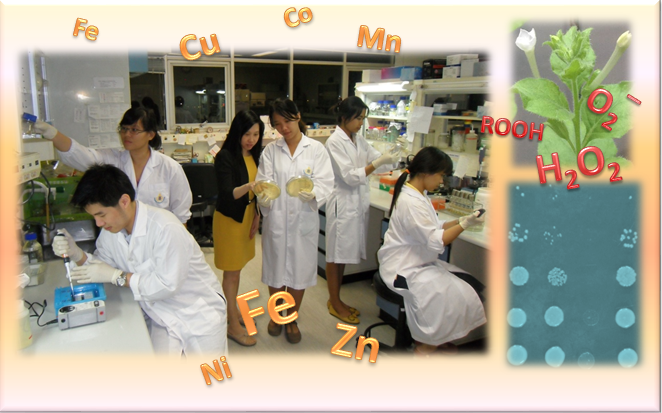Metal and oxidative stress responses in Agrobacterium tumefaciens

Plants have mechanisms to protect themselves from bacterial invasion by sequestering essential metals like iron to create low iron environments. Moreover, plants also generate high levels of reactive oxygen species such as H2O2 and superoxide radicals, which are used as an important initial defense mechanism to inhibit bacterial proliferation during infection.
Due to both the necessity of iron for physiological functions and also the toxicity of excess iron resulting from the formation of iron-catalyzed reactive oxygen species, iron homeostasis is tightly regulated in bacteria to ensure survival. The research aims at characterization of the iron-sensing transcriptional regulators, RirA (rhizobial iron regulator) and Irr (iron response regulator) from the phytopathogen Agrobacterium tumefaciens, in order to better understand mechanisms used by bacteria to satisfy their iron demand and prevent iron-induced toxicity.
It is also of interest to search for novel physiological roles of RirA and Irr beyond iron regulation and study the interplay between RirA, Irr and other transcriptional regulators to mediate the regulation of gene expression in response to diverse stressful conditions. The research will provide insight into functional roles as well as the impact of these regulators on the survival of A. tumefaciens during plant-pathogen interactions. RirA and Irr are found exclusively in members of alphaproteobacteria, including plant, animal and human pathogens. Therefore, information on the specific regulatory functions of RirA and Irr may provide potential therapeutic targets for controlling diseases.
The regulation of other metal transporters for zinc, manganese, nickel and cobalt is also being investigated to determine their important roles during host-pathogen interactions.


